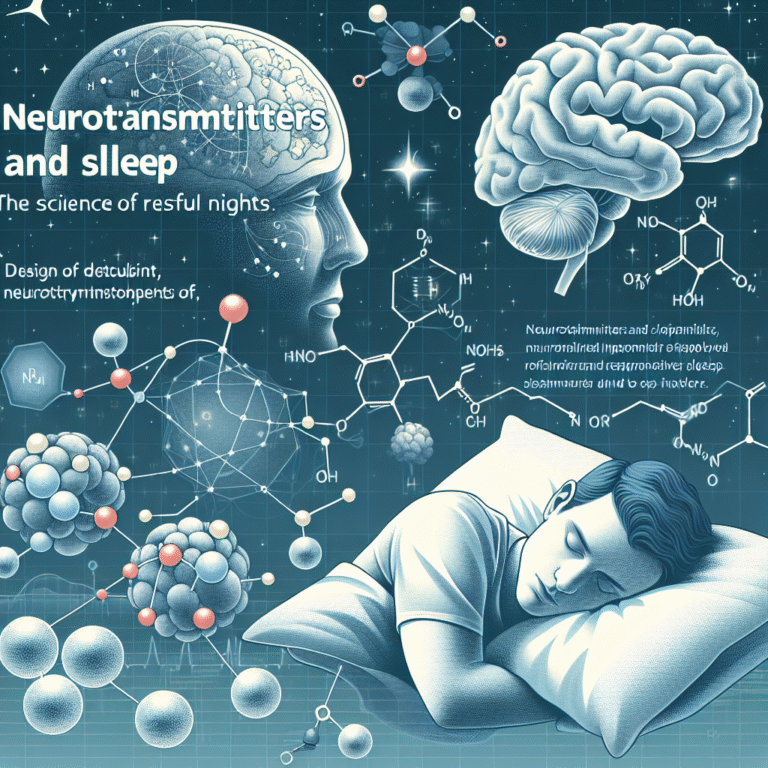
Introduction: The Unspoken Language We All Share
Imagine walking into a room filled with people. Without uttering a single word, you can sense the atmosphere—the tension in the air, the joy on a friend’s face, or the discomfort of a stranger. This is the power of nonverbal communication. From gestures to glances, nonverbal cues are essential to understanding human dynamics and interactions.
Nonverbal communication is potent; it often conveys more than spoken words. According to research, up to 93% of communication effectiveness is determined by nonverbal signals, such as facial expressions, body language, and eye contact. As we embark on this journey into nonverbal communication, consider how your understanding of "From Gestures to Glances: A Deep Dive into Nonverbal Communication" can significantly impact your personal and professional relationships.
The Impact of Nonverbal Communication in Daily Life
Understanding Nonverbal Communication
Nonverbal communication encompasses all forms of communication that don’t involve words. These include gestures, facial expressions, posture, tone of voice, and eye contact. Each element plays a unique role in conveying feelings, attitudes, and intentions.
The Key Components of Nonverbal Communication
| Component | Description |
|---|---|
| Facial Expressions | Universal signs of emotions like happiness, sadness, anger, and surprise. |
| Gestures | Intuitive movements of hands and arms that help convey messages. |
| Posture | Body position that indicates openness, confidence, or defensiveness. |
| Eye Contact | Communication through gaze, affecting intimacy, trust, and engagement. |
| Proxemics | Use of personal space to express intimacy or aggression. |
| Paralanguage | Vocal elements like tone, pitch, and tempo that can change meaning without altering words. |
The Science Behind Nonverbal Communication
Research reveals that nonverbal cues are often more reliable than verbal statements. A study conducted by Albert Mehrabian highlighted that 55% of communication effectiveness stems from body language, 38% from tone of voice, and only 7% from spoken words. This underscores the significance of exploring "From Gestures to Glances: A Deep Dive into Nonverbal Communication."
Case Study: The Power of Eye Contact
In a study conducted by K. McCullough and D. Walther, individuals were observed in various social settings. Participants who utilized meaningful eye contact were perceived as more confident and trustworthy. This finding illustrates the profound impact that a simple glance can have on human interaction.
Gesture: The Universal Language
The Role of Gestures in Communication
Gestures serve as one of the most immediate forms of nonverbal communication. They can emphasize spoken words, convey emotions, or even replace verbal communication altogether.
Types of Gestures
- Illustrators: These gestures complement what’s being said. For example, showing size with your hands.
- Emblems: Gestures with specific meanings, such as a thumbs-up for approval.
- Affect Displays: Facial expressions or hand movements that express emotions.
- Adaptors: Subconscious gestures often used to manage emotions, like fidgeting with hair during anxiety.
Cultural Variations in Gestures
Understanding global cultures can illuminate how gestures vary. In some cultures, a thumbs-up is a positive sign, while in others, it may be considered offensive. This highlights the importance of context when interpreting gestures, further emphasizing the relevance of "From Gestures to Glances: A Deep Dive into Nonverbal Communication."
Case Study: Cross-Cultural Gesture Understanding
In 2013, a survey conducted across several countries analyzed the meanings ascribed to common gestures. Findings revealed that a common gesture like "the OK sign" has vastly different interpretations around the world, from approval to insult. This case study emphasizes the need for cultural awareness in nonverbal communication.
Facial Expressions: The Window to the Soul
Understanding Facial Cues
Facial expressions reveal emotions in a way that words cannot. Charles Darwin’s work on emotional expressions highlights how these cues evolved as adaptations to communicate feelings.
The Seven Universal Emotions
- Joy
- Sadness
- Fear
- Disgust
- Anger
- Surprise
- Contempt
It’s essential to recognize these emotions to decode nonverbal communication accurately.
The Influence of Context on Facial Expressions
Facial expressions can alter their meaning based on context. For instance, a smile in a corporate meeting may signify approval, but in a tense negotiation, it might be interpreted as sarcasm. This complexity reinforces why understanding "From Gestures to Glances: A Deep Dive into Nonverbal Communication" is crucial in effective communication.
Case Study: The Impact of Smiles in Business
A study by the University of Texas found that smiling employees were perceived as more trustworthy by customers, leading to increased sales. This highlights how understanding and utilizing nonverbal cues such as smiles can have tangible benefits.
Posture: Reading the Body
Posture and Its Implications
Posture conveys confidence, openness, and readiness. An open posture—arms uncrossed or leaning slightly forward—signals engagement, while a closed posture—arms crossed or leaning back—can indicate defensiveness or discomfort.
The Relationship Between Posture and Confidence
Research has shown that adopting "power poses" can enhance feelings of confidence. This temporary act of opening oneself physically can lead to changes in mood and perceived authority.
Impact of Posture in Professional Settings
In business environments, posture can influence first impressions. Maintaining an open and confident posture can enhance perceptions of authority and leadership.
Case Study: Body Language in Job Interviews
A study conducted by LinkedIn revealed that candidates who exhibited open and engaging body postures during interviews were 30% more likely to receive job offers. This demonstrates the immense power of body language in critical situations.
Proxemics: The Space Between Us
Understanding Personal Space
Proxemics refers to the use of space in communication. The concept was popularized by Edward T. Hall, who categorized personal space into four zones:
- Intimate Space (0-18 inches): Reserved for close relationships.
- Personal Space (18 inches to 4 feet): Typically between friends and acquaintances.
- Social Space (4 to 12 feet): Used for casual or professional interactions.
- Public Space (12 feet and beyond): Suitable for public speaking or large gatherings.
Cultural Differences in Proxemics
Cultural backgrounds dictate individuals’ comfort levels regarding personal space. For example, people in Western cultures typically prefer more personal space than those in Mediterranean or Latin cultures, who may be more comfortable with closer proximity. Understanding these differences enhances cross-cultural communication, solidifying the idea behind "From Gestures to Glances: A Deep Dive into Nonverbal Communication."
Case Study: Proxemics in Global Business
A study involving multinational teams found that misunderstandings arose from differing perceptions of personal space. By fostering awareness of proxemics, teams improved engagement and collaboration. This emphasizes the need for global awareness in nonverbal communication.
Eye Contact: The Silent Connector
The Power of Eye Contact
Eye contact is a crucial nonverbal cue that fosters connection. It can convey interest, assertiveness, and empathy. However, the effectiveness of eye contact is often influenced by cultural factors.
The Importance of Eye Contact in Different Situations
- In Personal Relationships: Eye contact can deepen connections, indicating trust and intimacy.
- In Work Environments: Maintaining eye contact during discussions can enhance perceived engagement and competence.
Case Study: Eye Contact in Negotiation
A study from the University of Massachusetts found that negotiators who maintained steady eye contact were more likely to reach favorable agreements. This reinforces the importance of deciphering nonverbal cues as part of effective negotiation tactics—highlighting the essence of "From Gestures to Glances: A Deep Dive into Nonverbal Communication."
Conclusion: Transforming Communication through Nonverbal Skills
Throughout "From Gestures to Glances: A Deep Dive into Nonverbal Communication," we explored the myriad components that shape our nonverbal interactions. By becoming attuned to these signals—such as gestures, facial expressions, posture, and eye contact—we can enhance our ability to communicate effectively in both personal and professional settings.
As you reflect on the profound impact of nonverbal cues, consider how you can apply this knowledge. Here are some actionable insights:
- Be Mindful of Your Body Language: Pay attention to your gestures and posture in different settings.
- Practice Active Listening: Use eye contact to engage with others fully.
- Adapt to Cultural Contexts: Become aware of cultural variations in nonverbal communication.
- Be Open: Show openness in your body language to foster engagement and trust.
- Reflect on Your Emotions: Recognize how your nonverbal expressions can impact others.
In summary, mastering nonverbal communication can transform your interactions. Embrace it, practice it, and watch as your connections deepen and broaden.
FAQs
1. What is nonverbal communication?
Nonverbal communication encompasses all forms of communication that don’t use words, including gestures, facial expressions, posture, eye contact, and more.
2. Why is nonverbal communication important?
Nonverbal communication plays a crucial role in conveying emotions and intentions, often more effectively than verbal language.
3. How can I improve my nonverbal communication skills?
You can improve by being mindful of your body language, practicing active listening, and being aware of cultural variations in nonverbal cues.
4. Are there cultural differences in nonverbal communication?
Yes, different cultures interpret nonverbal signals in various ways. Understanding these differences is essential for effective cross-cultural communication.
5. How can I interpret others’ nonverbal cues?
Pay attention to signals such as facial expressions, posture, and gestures to understand the emotional context of a conversation.
By diving deep into nonverbal communication, we empower ourselves to connect more authentically and meaningfully with others. So the next time you enter a room, remember: beyond words, there’s a world of feelings waiting to be explored.
















